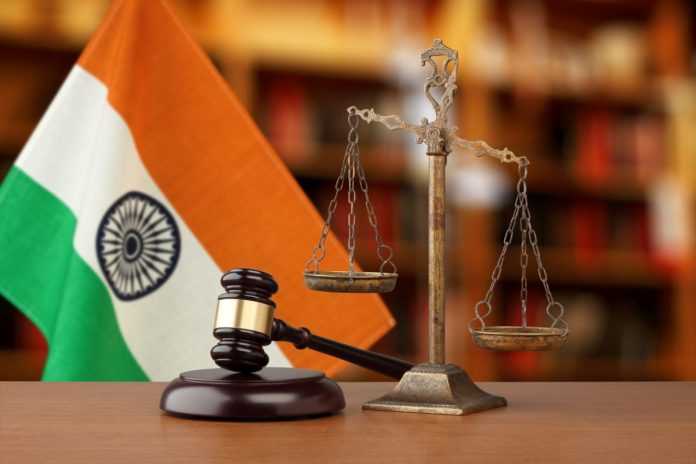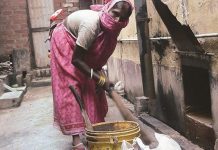This article is written by Lavanya Gupta, from the School of Law, Ansal University. This is an exhaustive article which deals with various modes of execution under the accessibility to the judicial system in rural areas.
Table of Contents
Introduction
The most trusted institution in India is the judiciary. Thus, the mechanism to appoint inadequate elevation is best and bright to the bench in the judiciary. The affordable justice of parliament which is enacted and provided by local courts to get justice quickly through the summary procedure as an integral part of the independent justice system in rural areas.
These local courts were appointed as an intermediate Panchayat level under the law. Out of 172 Gram Nyayalayas, only 152 are functional, and there is an urgent need to create local courts. Only 5000 courts can be created at a low cost per block in rural areas. Many aspects were also explained in this article related to the problems in the judicial system in rural areas. And the scenarios of the judicial system with the meaning and problems faced by these rural areas with some need of modern law and required changes to improve the system.
Background
All over the world, the Indian judiciary is one of the oldest legal systems and it still incorporates certain features derived genetically from the British judiciary from centuries of colonial rule in India. The common law system administers the Indian Judiciary with customs, securities, and legislation to codify all the land in terms of the law. From ancient and medieval times the practice of characteristics of princely states to retain partly and established by the colonial powers of the legal system was inherited in mid- 19th century. The name of the Supreme Court of India is known as the Apex court also. This court was the last and top appellate court of India. The top judicial bodies were the High courts in every state to be managed and controlled by the Chief Justice of states.
The district courts were below the High courts and also known as subordinate courts which were controlled and managed by the District and Session Judges. In Madras, the first judiciary trial was decided in the year 1665. The framework is provided by the supreme law of the Indian Constitution of this legal and judiciary of the country. India’s judiciary follows a “common law system” alongside the regulatory law and, therefore, the law. In an adversarial system, our legal system is based on which two sides were presented in every case of a neutral judge who provides the judgment which supports the arguments and the evidence of the case. Lots of problems were faced by our judiciary system, which shows weaknesses and the defects of the system with immediate reforms and accountability.
Current scenario of the judicial system in rural areas
The current scenario explains the problems faced by people of rural areas and they face lots of problem in getting the justice they get insolvent by fighting a single case in years but still didn’t reach to get the justice and in this article, we explained the scenarios which define the basic problem faced by these people:
- Corruption in the judiciary: Indian judiciary is also corrupted, and many scams were done like CWG scam, 2G scam, Adarsh society scam which includes rape and other atrocities with the society, etc. emphasized the conduct of politicians and dignities of the public with commoner including the drawbacks with the functioning of the judiciary. No accountability system is there. Media also hides the facts on account of fear of contempt. Without taking permission from a judge, people cannot file an FIR against the judge who is bribed.
- The backlog of pending cases: India’s system has lots of backlogs in pending cases in the whole world because almost 30 million cases are pending, in which 4 million cases in supreme courts and 65000 supreme lawsuits. Due to the inadequacy of the system, the number of pending cases is increased. It has always been discussed to extend the number of judges, creating more courts, but implementation is usually late or inadequate. The victims are the standard that was affordable by rich people and not by poor people in the dispensation of law in theirs. Many blockades for international investors and corporations were faced with doing business in India.
- Lack of transparency: some other problems were also faced by the Indian judiciary, doing with like lack of transparency. The Right to Information Act 2005 (RTI Act) is completely out of the ambit of the system. Thus, within the functioning of the judiciary, the substantial issues, just like the quality of justice and accountability which were not known properly.
- Hardships of the undertrials: most of the prisoners are undertrials who are confined to the jails in Indian prisons, which involves a particular conclusion. In most cases, they find themselves spending longer within the jail than the particular term, which may be awarded to the cases which have been decided on the time which is assumed against them. To serve the particular sentence, worse courts were defending themselves with pain and agony. Undertrials were not proven guilty until they were convicted. People who are rich easily bring the police to their sides, and as a result, they harass poor people or ask them to be silent during the ordeals of the courts.
- No interaction with society: relevant and regular interaction with society is very essential in the judiciary of any rural areas to be an integral part. In several areas, there is the involvement of common citizens in judicial decision making. However, in India, there is no reference to the society in which the Indian judiciary had inherited from the British judicial set-up. But from the last 60 years, things have changed. Even today, the law officers haven’t been ready to come closer to the bottom to satisfy the folk.
This system of justice is completely out of place and out of time, which is tuned with democratic procedures that only please a certain section of society with interest. Therefore, there’s an instantaneous got to restructure the whole judiciary to form it answerable to the requirements of a democratic, progressive society.
The aspect of the judicial system in rural areas
Caste and religion
The whole society is organized by the institution of caste represented into the entire system of groups with determined interrelationships, division of, and exchange of products and services which carried the social roles with the obligations of individual prescription.
Caste is defined as a set of families bearing a standard of name claiming standard mythical ancestors, human or divine, with professing to follow the hereditary calling of forming a homogeneous community. Every caste has its organizational structure referred to panchayats in down rules and regulations, which were obeyed by caste members. The judicial system settles the caste panchayat’s internal differences and conflicts. Judiciary is having the autonomous body of every caste socially, which executes the financial powers of the exercises over the members of caste with interest as a whole. This goes from caste to caste. But Brahmins enjoy the foremost privileges and rights which will exercise over the members of other castes. In rural life, there is a dominant position in social, political, and economic fields of castes. These rights and privileges together decreased in descending order of caste hierarchy.
Social and economic life
Dichotomous fashion with a continuum have differences among rural sociologists with some controversies. They argue the differences between both the communities with categorical nature in direct opposition to one another. Dichotomy stands for contrast and communities. The theory of continuum feels the differences between rural and urban areas relative to the degree in the range of extending in between extreme polar. This theory was supported by sociologists who put arguments instead of talking about village life to urban life with specific evolution that should empathize on the nexus found between the two communities. An agrarian economy is an example of a rural economy. Although farming and agriculture are one of the foremost important primary activities, the matter lies within the incontrovertible fact that they share with the agricultural sector in a constant decline of the GDP. Most of the population depends upon agriculture.
Village politics and Factionalism
Social solidarity is conventional in rural India. Well-knit social units were there in Indian villages. Peaceful co-existence and mutual support contribute to the vocation and caste of people in irrespective villages. Villages are the pride image. By factionalism, the unity of the village has been threatened. Political ideology, caste power, and the clash of power served to the political, social, and economic interests of a little minority is a small group formed by a faction. This intervenes in the factors to the judicial system with a lack of factionalism.
Natural rivalry and conflict of personality were the accounts of ugly heads to raise factionalism in the view of sociologists. Many political parties interfere in the matter of village politics. Different factions divide into agricultural society and party politics as the result of Gram Panchayat with ridden. In rural India, factionalization is the foremost part, determined by casteism. People belonging to different castes attempt to gain political leverage for their castes at the time of the election. Therefore factions were organized into themselves. Narrow political gains were divided into one caste. The politics also stop some judicial matters to get cleared in villages and this affects the life forms of people and delays in getting justice.
Problems faced
There are some problems which were faced by rural people on the note of judiciary at economic, territorial, organizational, and others which were explained further:
Economic
The Indian rural faces the tough conditions of drought and famine, which impact the lives of people because they are uneducated, and they depend on agriculture. Rural people face issues of undulation and poverty. The people are unemployed because they lack the skills to take up opportunities in life and people were not aware of the benefits of the judiciary and to aware people of the benefits of the judicial system in rural areas also and if the agricultural sector is educated and advanced, it’s easier to try to do business and therefore the development is high and the factors were getting more clear in the aspect of judicial system also. The uneducated and unemployed lead to the problem of getting justice and those people get fraud by the people easily. This will affect the justice process for the people. The same problem is faced by the courts of rural areas as there is no maintenance of courts, and people don’t even bother about the economic condition of courts.
Territorial
The Naga insurgence, which started within the 1950s, referred to as the mother of the Northeast insurgencies, is one among the oldest unresolved armed conflicts. Between 1990 and 2000, low-intensity conflicts have been witnessed in Manipur, Assam, Nagaland, and Tripura. These differences in territories were a lack in the judicial system and were at high risk of getting less justice and many fewer courts were also there in these territories. Currently, most of the states within the region are suffering from some sort of conflict, apart from Arunachal Pradesh, Mizoram, and Sikkim, during which things are relatively stable. Respective conflicts were started from the separatist movement of inter-community and inter-ethnic conflicts. These conflicts were the reason for late justice for people in rural areas and the mismanagement of the judicial system misguide those poor people.
Organizational
The organizational structure has its caste panchayats which lay down the rules and regulations which were obeyed by the members of these castes. The conflicts and differences in caste panchayat were settled in the judicial system. The caste in every group is autonomous socially with the power of finance and owns its exercise over the caste and members of interest as a whole.
Others
In India, there are many socio and economic problems faced by particular group members of experienced access to health and healthcare. This task of identifying the groups isn’t a simple one. Besides, there are multiple and sophisticated facts of the vulnerability of different layers and can’t be analyzed in isolation and the judicial system is at risk of providing justice to the people in rural areas. Women, schedule caste, schedule tribe, children, disabled, poor migrants, etc. faced the problem of discrimination to their multiple barriers in getting fair justice by the courts they were not valued much in rural areas. For example, in a patriarchal society, disabled women face the double discrimination of being a woman and being disabled. This mindset was also supported by people of rural areas as they were not educated and didn’t understand the wisdom of courts in those areas for a better future. This restricts the judicial system from making justice with those people.
Need for a modern law
People in rural and regional areas identify the barrier for effective participation in processes of courts when there is a lack of access to courts. The court hearing took place once every six months, which was reported by community legal center workers. Judiciary is the lifeline of legal societies and hence it has a pivotal role to play in every country. Hence courts are places meant for worship by those who handle the law. Courts aren’t just the money-making spots. Spot-fixing in courts against the constitution is immoral and illegal. The importance of the judiciary in any system of government cannot be disputed or questioned chiefly because without it the system can collapse.
The flaws of the judicial system or we can say the delivery of justice with negative phenomena to harm the proper functioning in jurisprudence had the bad hamper of genuine judgment to deliver the justice without any favor and nepotism and also without any corrupt practices to get involved. The need for honest and truly secular judges without involvement in any corruption issues needs not overstressed. The quality of judges determines the quality of proceedings and speedy judgments. The general understanding of the public domain which helps in courts to get justice without money to make law salute to the criminals and frauds. The impression of the public is devastating for the system of government which harms the legal system. To get the change in a modern democracy we have to involve developing and developed nations.
Conclusion
The parameters we saw in rural areas regarding the accessibility of the judiciary are very backward as there are no facilities provided to people as well as the members of courts. People do not want to go to court for any case or to get justice. The condition of courts is worse, and there have been no economic changes in the past many years. Current arrangements to carry erring judges to account have failed. As a citizen, it’s my right to see various aspects and as youth make changes in the system for the benefit of people. We have to provide education in rural areas so that they will also understand the benefits of the judiciary and value them to get justice. To achieve the goal of eradication, such as social evils, we need quality education. The most trusted institution is the judiciary in India. The appointment of judicial mechanisms has a low elevation of best and brightest to the bench. People believe that if no one is giving them the justice, they deserve they get that justice from the courts. To maintain that belief, courts need to work harder and make our country a crime-free country.
References
- https://www.mapsofindia.com/my-india/society/five-major-problems-the-indian-judicial-system-is-facing
- https://www.fdrindia.org/judicial-reforms
- http://www.lawfoundation.net.au/report/consultations/43EEDFB6FD42A68DCA257060007D4EE1.html
- https://www.yourarticlelibrary.com/essay/essay-on-rural-factionalism-in-india-2040-words/4882
- https://www.docsity.com/en/court-diary-of-the-internship-under-criminal-lawyer/5093358
- https://www.sociologyguide.com/rural-sociology/caste-structure-rural-set-up.php
- https://andhrapradesh.pscnotes.com/appsc-group-1-mains/paper-iii/polity-paper-iii-appsc-group-1-mains/civil-and-criminal-law…
- https://www.yourarticlelibrary.com/essay/indias-rural-life-sociological-characteristics-of-indias-rural-life/31949
- https://in.boell.org/en/2009/02/28/conflict-northeast-india-issues-causes-and-concern
- http://www.legalservicesindia.com/article/1079/Vulnerable-Groups-in-India—Status,-Schemes,-Constitution-of-India.html
- https://www.ias.network/gs-2-notes-for-upsc-by-ias-network
- https://thefactfactor.com/facts/law/legal_concepts/indian_judiciary/district-courts/844
- https://www.yourarticlelibrary.com/problems/the-problems-faced-for-rural-development-in-india/4791
- https://www.civilsdaily.com/story/judicial-reforms
- https://paperity.org/p/75881417/the-european-guideline-on-management-of-major-bleeding-and-coagulopathy-followi
LawSikho has created a telegram group for exchanging legal knowledge, referrals and various opportunities. You can click on this link and join:













